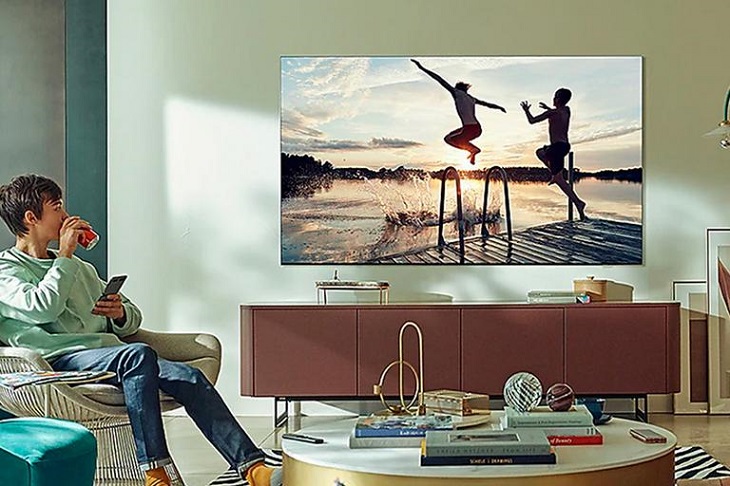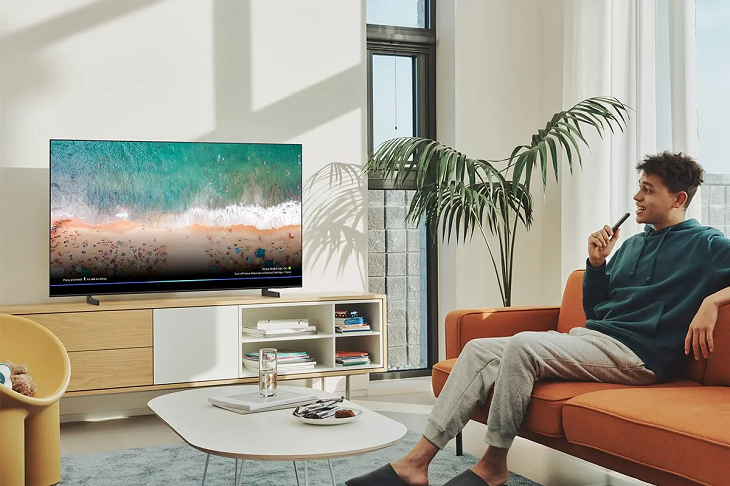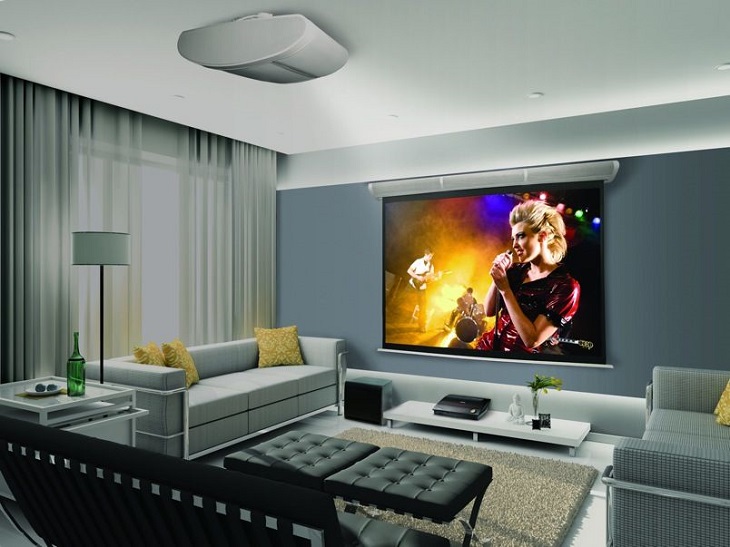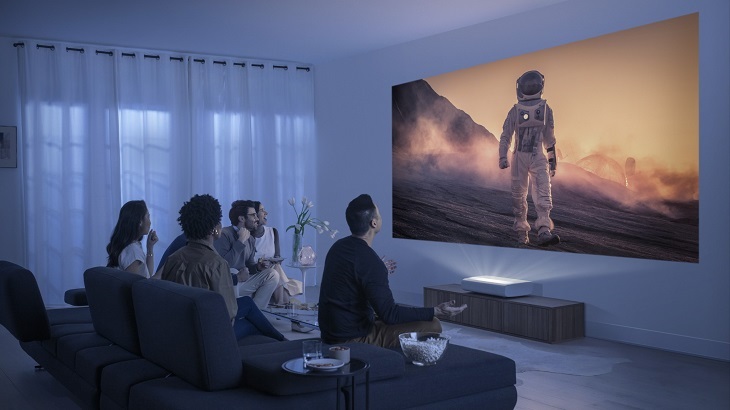Are you gearing up for movie night at home? Do you want to take the viewing experience to the next level and create a truly immersive home theatre? Of course, the long-standing debate of whether movie theatres or home systems are better will rage on, but we do know one thing – not having to leave the house for a theatre-like experience is a win.
But with the modern technological marvels at our disposal, we’re often spoilt for choice in terms of bringing our cinematic ideas to fruition. Two of the most widespread options that can help us pave the way are big-screen TVs and projectors. But how does each one stack up against the other?
The Case for Big Screen TVs

Perhaps the most common household item for home theatre setups, TVs have come a long way since their inception. Nowadays, you can get a crisp and detailed smart TV with a 60-inch display as opposed to the bulky, low-resolution ones of yesteryear. But what advantages do they bring to the table?
Greater Sharpness and Image Clarity
There’s no denying that image quality has come a long way in recent years. With the availability of 4K and 8K resolution screens, you can get a superior viewing experience with increased sharpness and clarity. These advanced displays offer more detailed images with improved colour accuracy and contrast levels, resulting in a stunning visual experience.
It doesn’t matter if you get a 60-inch smart TV or something even bigger – you’ll be able to enjoy a vivid display with rich colours and immersive visuals. Every detail is accounted for, and you won’t have to worry about any fuzzy images or choppy frames.
One thing that’s particularly great about these devices is their refresh rate. This is basically the number of times the image is updated on-screen, with higher numbers resulting in smoother, more fluid movements on the display. Most models can now reach up to 240Hz, so you can enjoy super-fast action scenes without any hiccups.
Immersive Sound Quality
In addition to vibrant visuals, modern TVs come with advanced sound systems that can take your home theatre experience to the next level. With built-in speakers and audio technologies, you can take in all the sounds of your favourite movie or show with great depth and clarity.
Most devices come with built-in Dolby Audio or DTS:X – both of which produce greater depth and power in sound. The former creates a room-filling experience, while the latter produces surround sound with greater precision. Either way, you won’t have to worry about getting separate sound systems – you can get virtually the same experience with a TV.
Effortless Setup

It doesn’t matter if you have a smart TV with a 60-inch display or a larger model – they can all be set up quickly and easily. All you have to do is plug in the power cord, connect it to the right audio and video sources, and you’re ready to go. The configuration itself is a breeze, as most devices come with on-screen instructions and user-friendly menus.
What’s more, modern TVs are designed to be slim and lightweight, so you don’t have to be super muscular or tech-savvy to move them around. If you don’t have a dedicated stand for your TV, you can always mount it on the wall to save space in your living room.
Greater Durability
Unlike projectors, TVs don’t come with any moving parts. This means they’re more resistant to physical damage and wear and tear over time. Even if you move the device from one place to another, there’s no risk of damaging its internal components, as long as you do it carefully.
Not only do they come in a single unit, but TVs are also designed to last for many years. As long as you take care of them properly, they can remain in great condition while giving you a consistent viewing experience throughout.
Variety of Viewing Options
These days, we’re no strangers to streaming services and online content. With a TV, you can access all sorts of streaming platforms, such as Netflix and Hulu, as well as catch up on free-to-air channels.
You can also connect a gaming console or media player with ease, which is great if you want to play your favourite games or watch videos on YouTube. You don’t even have to worry about the quality, as most media devices offer a great resolution and frame rate.
The Case for Projectors

When looking at the other side of the equation, projectors have their own benefits to offer. They’ve been around for many years, and the technology has only gotten better over time. Although they’re still considered outdated by some, manufacturers have managed to keep up with the times in various ways, contributing to:
Bigger Viewing Experience
Even if you get the largest TV available, you’re not exactly getting a wall-sized experience. Projectors, on the other hand, can cover much larger areas, allowing you to enjoy your favourite movies or shows on an even bigger scale.
This can be particularly useful if your living room is quite spacious, as you can make the most of the available space. Some projectors even come with auto-scaling features, so they can adjust their output according to the size of the accompanying screen.
More Affordable
Due to their simple construction, projectors tend to be much more affordable than TVs. Naturally, the price can still go up depending on the model, but if you’re looking for a budget-friendly solution that has great picture quality, then a projector might be up your alley.
The overall difference in image quality may not be as great as what you’d get with a TV, but it’s still enough to get a decent viewing experience. Plus, you can always invest in a better model if you’re willing to spend more money.
Better Portability

Finally, you can’t ignore the portability factor when it comes to projectors. These devices are quite compact and can be stored in a small bag or box. This specific advantage is especially useful if you like to host movie nights in your backyard, as they can be set up easily in any environment.
Plus, if you have a tendency to go out of town often, you can bring your projector with you without it weighing you down. All you have to do is connect it to an external power source and plug in your media device of choice – it’s as simple as that.



















